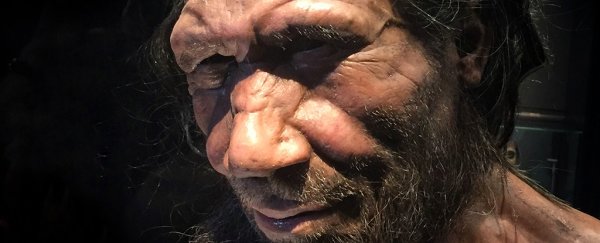Neanderthals were an extinct relative of modern humans once found across Europe, extending into Central and Southwest Asia.
They are considered either a distinct species, or a subspecies of Homo sapiens called Homo sapiens neanderthalensis, with a more robust anatomy and shorter stature that generally implies greater strength and physical resilience.
While they technically possessed a slightly larger brain volume than modern humans, their mix of social and cognitive abilities has been debated over the years, with disputed examples of art, clothing, and even funerary customs offered as evidence of culture.
What did Neanderthals look like?
Early depictions of Neanderthals were based off a single skeleton unearthed at the beginning of the 1900s near La Chapelle-aux-Saints, France, painted a cliche picture of a slouching, brutish human.
Subsequent research on not only this specimen, but others, has long since put to rest the notion that these relatives had a posture significantly different to ours.
Studies of their genes raised the possibility that, like modern humans, Neanderthals could have had varied pigmentation that included red hair colourations and fair skin.
Analysis of ancient teeth suggests our mutual ancestors diverged at least 800,000 years ago, with genetic analysis comparing their DNA with ours suggesting there was occasional mixing of our genes over the millennia.
It's hard to know exactly what legacy Neanderthals left in our own adaptations, with studies debating the extent of influence their genes have had. Possibilities include bestowing us with improved immune systems, and subtle variations to our skull shape.
The last populations of Neanderthals are thought to have died out roughly 40,000 years ago, several thousand years or so after a wave of modern humans migrated deeper into Europe. There are numerous hypotheses attempting to explain their disappearance as a consequence of increased competition, inbreeding, introduced diseases, or climate change.
All topic-based articles are determined by fact checkers to be correct and relevant at the time of publishing. Text and images may be altered, removed, or added to as an editorial decision to keep information current.
